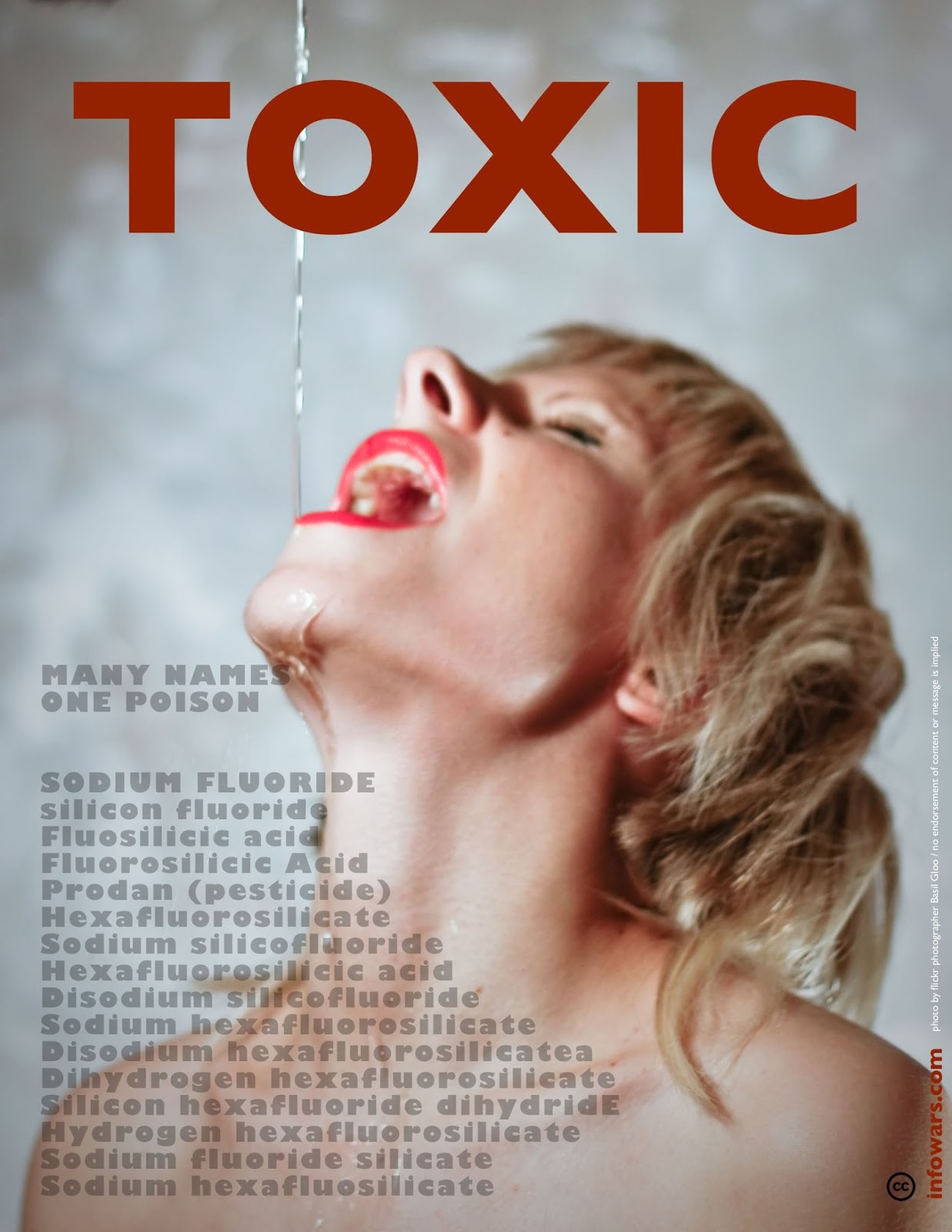Last Updated on February 8, 2020
There are a long list of articles on my site about fluoride. Why it’s insane to add it to water (and toothpaste), how to avoid it, and how to eliminate it from your body.
Here’s a (lengthy) documentary on the story of fluoride. In just the first 10 minutes or so Paul Connet (retired Professor of Meritus of Chemistry, Saint Lawrence University, New York) makes a lot of pertinent points.
Why are we adding fluoride—a poison—to our water?
[youtube id=”sh-oeu2L8yM” align=”center” mode=”normal” autoplay=”no” maxwidth=”1200″ parameters=”?modestbranding=1 controls=2 showinfo=0″]
Here’s a few related facts of interest…
“We would not purposely add arsenic to the water supply.
And we would not purposely add lead. But we add fluoride.
The fact is that fluoride is more toxic than lead and just
slightly less toxic than arsenic.” (source)
“The federal maximum contaminant level (MCL)
for lead is 15 parts per billion (ppb),
5 ppb for arsenic and
4000 ppb for fluoride.” (source)
75% of US public drinking water is fluoridated.
43 of the top 50 U.S. cities (by population) are fluoridated.
About 330 million people in the world drink artificially fluoridated
water. 200 million live in the U.S., 50 million in Brazil (33% of
pop.), 40 million in the Soviet Union (15% of pop.), 9% of the U.K.’s
pop. 66% of Australia’s and New Zealand’s, and 50% of Canada’s. (source)
Here are some more “Quick Facts” on global water fluoridation:
Quick Facts:
- Most developed nations, including 97% of western Europe, do not fluoridate their drinking water.
- Of the 34 countries in the Organization for Economic Cooperation and Development (OECD), only 10 have water fluoridation programs.
- Four of the 10 OECD countries with water fluoridation programs have less than 15% of their population drinking fluoridated water: South Korea (6%), Spain (11%), and the United Kingdom (11%).
- Only 6 OECD countries have more than 50% of their populations drinking fluoridated water: Australia (80%), Chile (70%), the Irish Republic (73%), Israel (70%), New Zealand (61%), and the United States (64%).
- Excluding the United States, just 7% of the population in OECD countries consumes artificially fluoridated water.
- In total, 369,656,000 people worldwide drink artificially fluoridated water. This represents 5% of the world’s population.
- There are more people drinking fluoridated water in the United States than the rest of the world combined.
- There is no difference in tooth decay between western nations that fluoridate their water and those that do not.
| Water Fluoridation Status of OECD Nations (BFS 2012) | |||
| Country | Population Size* | No. of People w/ Fluoridated Water** | % w/ Fluoridated Water** |
| Australia | 22,692,531 | 17,600,000 | 80% |
| Austria | 8,452,835 | 0 | 0% |
| Belgium | 10,951,266 | 0 | 0% |
| Canada | 34,880,400 | 14,260,000 | 44% |
| Chile | 17,402,630 | 11,000,000 | 70% |
| Czech Republic | 10,504,203 | 0 | 0% |
| Denmark | 5,584,758 | 0 | 0% |
| Estonia | 1,294,236 | 0 | 0% |
| Finland | 5,413,830 | 0 | 0% |
| France | 65,350,000 | 0 | 0% |
| Germany | 81,859,000 | 0 | 0% |
| Greece | 10,787,690 | 0 | 0% |
| Hungary | 9,962,000 | 0 | 0% |
| Iceland | 320,060 | 0 | 0% |
| Irish Republic | 4,588,252 | 3,250,000 | 73% |
| Israel | 7,879,500 | 5,270,000 | 70% |
| Italy | 60,820,787 | 0 | 0% |
| Japan | 127,530,000 | 0 | 0% |
| Luxembourg | 511,800 | 0 | 0% |
| Mexico | 112,336,538 | 0 | 0% |
| Netherlands | 16,738,836 | 0 | 0% |
| New Zealand | 4,434,400 | 2,330,000 | 61% |
| Norway | 5,027,800 | 0 | 0% |
| Poland | 38,501,000 | 0 | 0% |
| Portugal | 10,561,614 | 0 | 0% |
| Slovakia | 5,445,324 | 0 | 0% |
| Slovenia | 2,057,910 | 0 | 0% |
| South Korea | 48,580,000 | 2,820,000 | 6% |
| Spain | 46,163,116 | 4,250,000 | 11% |
| Sweden | 9,495,113 | 0 | 0% |
| Switzerland | 7,952,600 | 0 | 0% |
| Turkey | 74,724,269 | 0 | 0% |
| United Kingdom | 62,262,000 | 5,797,000 | 11% |
| United States | 314,059,000 | 185,767,000 | 64% |
| TOTAL (with United States) | 1,245,125,298 | 252,344,000 | 20% |
| TOTAL (without United States) | 931,066,298 | 66,577,000 | 7% |
| * List of Countries by Population – http://en.wikipedia.org/wiki/List_of_countries_by_population ** British Fluoridation Society (2012). One in a Million: The facts about water fluoridation. Available online at: http://www.bfsweb.org/onemillion/onemillion2012.htmlNOTE: The data for “Population Size” is mostly from 2012, whereas the “Number of People with Fluoridated Water” and “Percent with Fluoridated Water” data is based on estimates that the British Fluoridation Society (BFS) appears to have derived between 2009 and 2011. This time difference may explain why some of the BFS’s estimates for “Percent with Fluoridated Water” are incorrect when calculating the population data in this table. | |||


Recent Comments